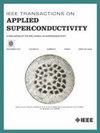A Quench Behavior Predictive Model for High Temperature Superconducting Magnet Based on Deep-Learning Neural Network
IF 1.7
3区 物理与天体物理
Q3 ENGINEERING, ELECTRICAL & ELECTRONIC
引用次数: 0
Abstract
No-insulation (NI) high temperature superconduct-ing (HTS) coils show higher stability than traditionally insulated HTS coils. However, quench remains one of the most crucial issues affecting the safe operation of NI magnets. The quench behaviors in NI coils exhibit inherent complexity since turn-to-turn current redistribution. Low normal zone propagation speed of HTS materials makes it difficult to detect the local hotspot in the early stage of quench, which potentially leads to irreversible damage. In this study, a multi-physical quench behavior predictive model based on Long Short-Term Memory (LSTM) network for HTS NI coils is proposed. Quench data is obtained from an electromagnetic-thermal coupled numerical model with different quench initial locations. By leveraging multi-physical signals as input, the model can predict the dynamic quench behaviors over a future period of time, including temperature, azimuthal current, radial current density and magnetic field. Additionally, the model is capable of predicting quench behaviors at different spatial locations within the coil, achieving a prediction speed of 0.002 seconds and a prediction error below 0.2%. This method demonstrates promise for early quench detection using multi-physical signals and for enabling a timely protection system response.基于深度学习神经网络的高温超导磁体淬火行为预测模型
无绝缘高温超导(NI)线圈比传统绝缘高温超导线圈具有更高的稳定性。然而,淬火仍然是影响NI磁体安全运行的最关键问题之一。NI线圈的淬火行为由于匝间电流再分布而表现出固有的复杂性。高温超导材料正常区传播速度慢,在淬火初期难以发现局部热点,有可能导致不可逆损伤。本文提出了一种基于长短期记忆(LSTM)网络的高温高温镍线圈多物理点猝灭行为预测模型。淬火数据来源于不同淬火初始位置的电磁-热耦合数值模型。通过利用多物理信号作为输入,该模型可以预测未来一段时间内的动态淬火行为,包括温度、方位电流、径向电流密度和磁场。此外,该模型能够预测线圈内不同空间位置的淬火行为,预测速度为0.002秒,预测误差小于0.2%。该方法证明了使用多物理信号进行早期淬火检测并使保护系统能够及时响应的希望。
本文章由计算机程序翻译,如有差异,请以英文原文为准。
求助全文
约1分钟内获得全文
求助全文
来源期刊

IEEE Transactions on Applied Superconductivity
工程技术-工程:电子与电气
CiteScore
3.50
自引率
33.30%
发文量
650
审稿时长
2.3 months
期刊介绍:
IEEE Transactions on Applied Superconductivity (TAS) contains articles on the applications of superconductivity and other relevant technology. Electronic applications include analog and digital circuits employing thin films and active devices such as Josephson junctions. Large scale applications include magnets for power applications such as motors and generators, for magnetic resonance, for accelerators, and cable applications such as power transmission.
 求助内容:
求助内容: 应助结果提醒方式:
应助结果提醒方式:


